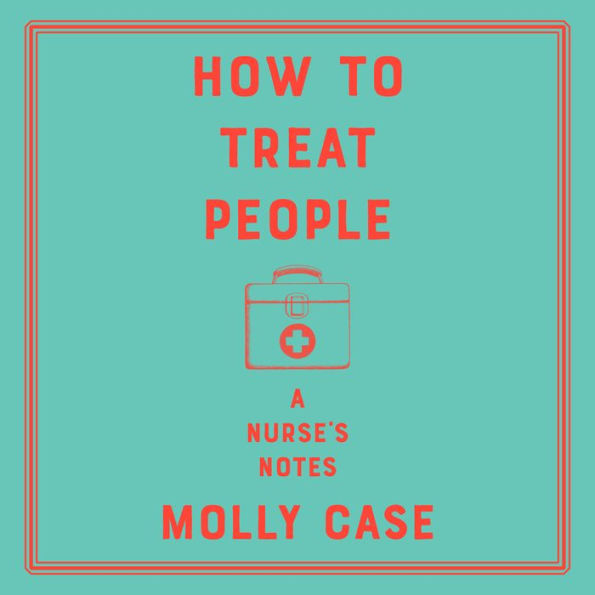[How to Treat People] will restore your faith…[Case] illuminates the fascinating and never-ending loop of care in a hospital: Doctors and nurses tend to their charges for hours, often without a break, then hand them over to the next shift, and on and on and on, shuttling patients as best they can through a balky, imperfect health care system.
As a teenager, Molly Case underwent an operation that saved her life. Nearly a decade later, she finds herself in the operating room again-this time as a trainee nurse. She learns to care for her patients, sharing not only their pain, but also life-affirming moments of hope. In doing so, she offers a compelling account of the processes that keep them alive, from respiratory examinations to surgical prep, and of the extraordinary moments of human connection that sustain both nurse and patient.
In rich, lyrical prose, Case illustrates the intricacies of the human condition through the hand of a stranger offered in solace, a gentle word in response to fear and anger, or the witnessing of a person's last breaths. It is these moments of empathy, in the extremis of human experience, that define us as people. But when Molly's father is admitted to the cardiac unit where she works, the professional and the personal suddenly collide.
Weaving together medical history, art, memoir, and science, How to Treat People beautifully explores the oscillating rhythms of life and death in a tender reminder that we can all find meaning in being, even for a moment, part of the lives of others.
1130420288
In rich, lyrical prose, Case illustrates the intricacies of the human condition through the hand of a stranger offered in solace, a gentle word in response to fear and anger, or the witnessing of a person's last breaths. It is these moments of empathy, in the extremis of human experience, that define us as people. But when Molly's father is admitted to the cardiac unit where she works, the professional and the personal suddenly collide.
Weaving together medical history, art, memoir, and science, How to Treat People beautifully explores the oscillating rhythms of life and death in a tender reminder that we can all find meaning in being, even for a moment, part of the lives of others.
How to Treat People: A Nurse's Notes
As a teenager, Molly Case underwent an operation that saved her life. Nearly a decade later, she finds herself in the operating room again-this time as a trainee nurse. She learns to care for her patients, sharing not only their pain, but also life-affirming moments of hope. In doing so, she offers a compelling account of the processes that keep them alive, from respiratory examinations to surgical prep, and of the extraordinary moments of human connection that sustain both nurse and patient.
In rich, lyrical prose, Case illustrates the intricacies of the human condition through the hand of a stranger offered in solace, a gentle word in response to fear and anger, or the witnessing of a person's last breaths. It is these moments of empathy, in the extremis of human experience, that define us as people. But when Molly's father is admitted to the cardiac unit where she works, the professional and the personal suddenly collide.
Weaving together medical history, art, memoir, and science, How to Treat People beautifully explores the oscillating rhythms of life and death in a tender reminder that we can all find meaning in being, even for a moment, part of the lives of others.
In rich, lyrical prose, Case illustrates the intricacies of the human condition through the hand of a stranger offered in solace, a gentle word in response to fear and anger, or the witnessing of a person's last breaths. It is these moments of empathy, in the extremis of human experience, that define us as people. But when Molly's father is admitted to the cardiac unit where she works, the professional and the personal suddenly collide.
Weaving together medical history, art, memoir, and science, How to Treat People beautifully explores the oscillating rhythms of life and death in a tender reminder that we can all find meaning in being, even for a moment, part of the lives of others.
19.99
In Stock
5
1

How to Treat People: A Nurse's Notes

How to Treat People: A Nurse's Notes
FREE
with a B&N Audiobooks Subscription
Or Pay
$19.99
19.99
In Stock

Editorial Reviews
Product Details
| BN ID: | 2940173915849 |
|---|---|
| Publisher: | HighBridge Company |
| Publication date: | 09/10/2019 |
| Edition description: | Unabridged |
Videos

From the B&N Reads Blog
